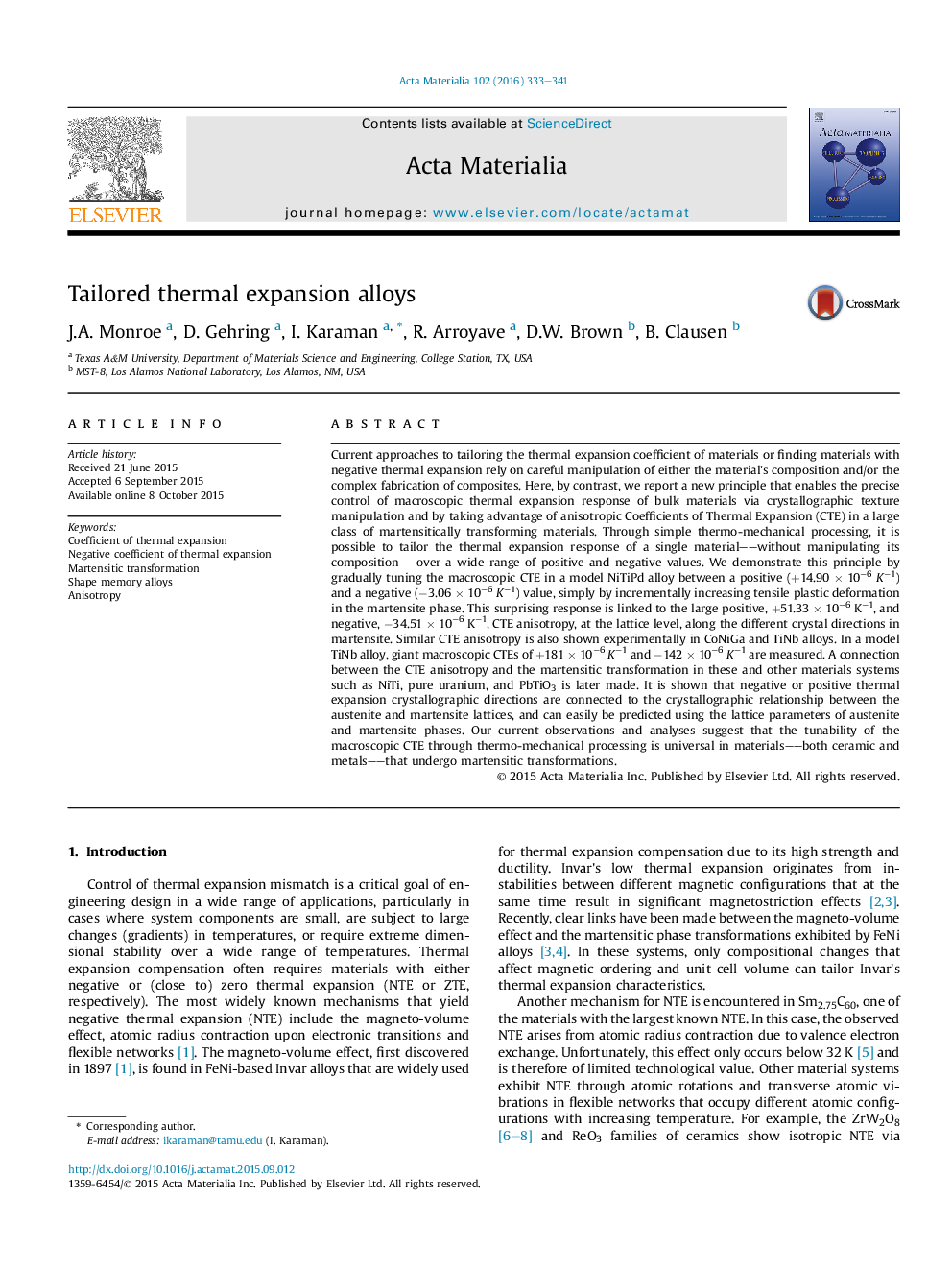| کد مقاله | کد نشریه | سال انتشار | مقاله انگلیسی | نسخه تمام متن |
|---|---|---|---|---|
| 1445209 | 1509574 | 2016 | 9 صفحه PDF | دانلود رایگان |
Current approaches to tailoring the thermal expansion coefficient of materials or finding materials with negative thermal expansion rely on careful manipulation of either the material's composition and/or the complex fabrication of composites. Here, by contrast, we report a new principle that enables the precise control of macroscopic thermal expansion response of bulk materials via crystallographic texture manipulation and by taking advantage of anisotropic Coefficients of Thermal Expansion (CTE) in a large class of martensitically transforming materials. Through simple thermo-mechanical processing, it is possible to tailor the thermal expansion response of a single material––without manipulating its composition––over a wide range of positive and negative values. We demonstrate this principle by gradually tuning the macroscopic CTE in a model NiTiPd alloy between a positive (+14.90 × 10−6 K−1) and a negative (−3.06 × 10−6 K−1) value, simply by incrementally increasing tensile plastic deformation in the martensite phase. This surprising response is linked to the large positive, +51.33 × 10−6 K−1, and negative, −34.51 × 10−6 K−1, CTE anisotropy, at the lattice level, along the different crystal directions in martensite. Similar CTE anisotropy is also shown experimentally in CoNiGa and TiNb alloys. In a model TiNb alloy, giant macroscopic CTEs of +181 × 10−6 K−1 and −142 × 10−6 K−1 are measured. A connection between the CTE anisotropy and the martensitic transformation in these and other materials systems such as NiTi, pure uranium, and PbTiO3 is later made. It is shown that negative or positive thermal expansion crystallographic directions are connected to the crystallographic relationship between the austenite and martensite lattices, and can easily be predicted using the lattice parameters of austenite and martensite phases. Our current observations and analyses suggest that the tunability of the macroscopic CTE through thermo-mechanical processing is universal in materials––both ceramic and metals––that undergo martensitic transformations.
Figure optionsDownload high-quality image (133 K)Download as PowerPoint slide
Journal: Acta Materialia - Volume 102, 1 January 2016, Pages 333–341
